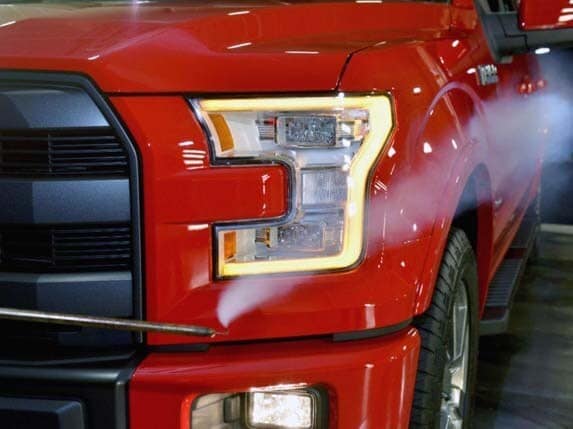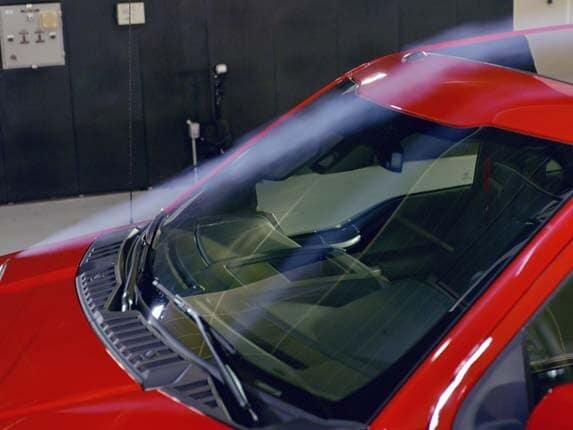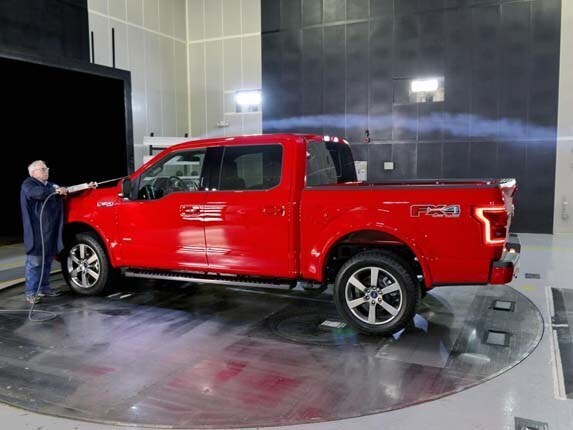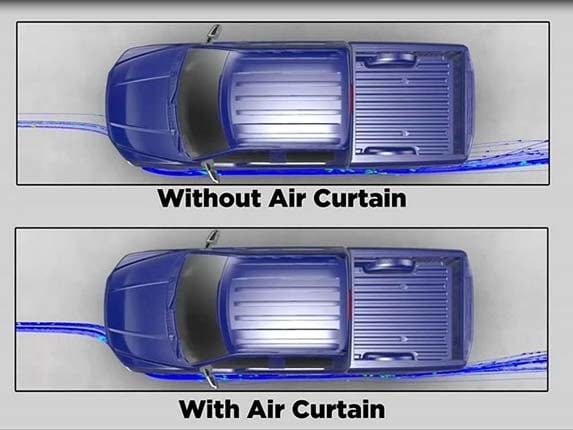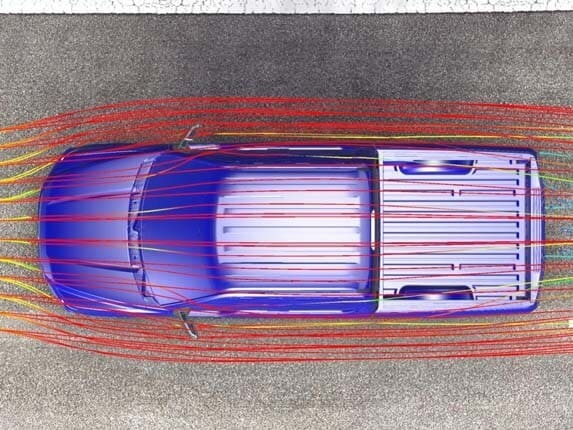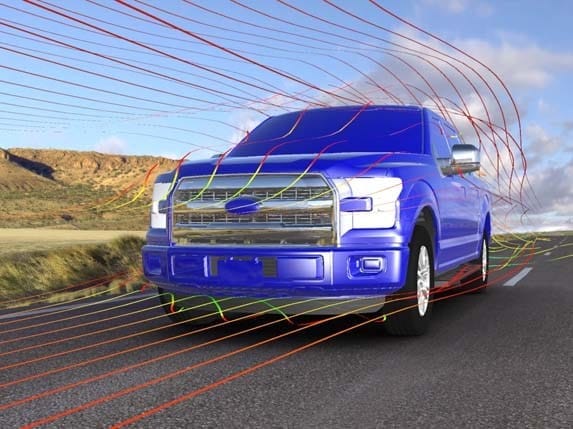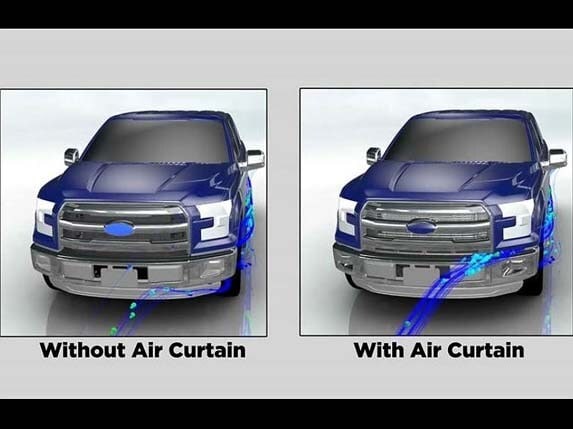Although the biggest news for the redesigned 2015 Ford F-150 pickup centered on its weight reduction through the use of aluminum in place of steel, the country’s best-selling vehicle also incorporates a number of other economy enhancing tricks to make it the most aerodynamic F-150 ever — and to help it become the most fuel-efficient full-size pickup powered by a gasoline engine sold in America. Prime on that list is a series of drag-reducing features led by the use of air curtains on the F-150’s front fascia.
Going with the flow
An innovation also found on new Mustang, the basic Air Curtain concept was pioneered by BMW on the 1 Series M Coupe in 2011. Essentially, it consists of an intake orifice – in the case of the F-150, a horizontally oriented slot located below the headlight – that channels air into the fenderwell and then directs it out and across the outer surfaces of the wheel and tire. Although it might not be obvious at first glance, a rotating wheel/tire is a prime source of drag-inducing turbulence. Effectively isolating it behind what amounts to a wall of high-velocity air significantly reduces the disruptive wake that’s created and gives the F-150 a notably sleeker overall profile at speed.
Also: Class of 2016 — New Cars Ready to Roll
Based on extensive fluid dynamics computations and wind tunnel tests, Ford engineers complemented the F-150’s new air curtains with a number of other subtle but effective cleanup tweaks starting with a flush mounted windshield. They also designed the truck’s full-size cargo box to be marginally narrower than the cab and inserted a flow-optimizing fillet between these two main body components. Finally, the upper surface of the tailgate is contoured to act like a mini spoiler to trim turbulence from air streaming off the roof. Also, the rear corners including the taillamp edges, are purposefully angled to further enhance airflow. The net result is that a rear-drive 2015 F-150 fitted with a 2.7-liter EcoBoost V6 currently earns class-best 19 city/26 highway mpg ratings.
More Pickup Trucks…
Check out our Pickup Truck Buyer’s Guide for a look at what’s new and what’s next.
Popular at KBB.com
See the All-New Cars for 2015
10 Coolest Cars Under $18,000
Best Buys of 2015
